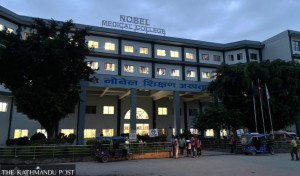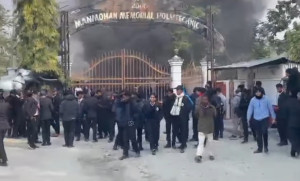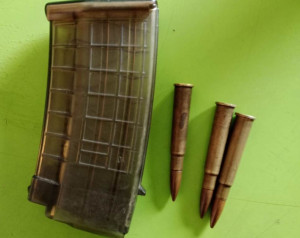Koshi Province
Non-communicable diseases a major threat to public health
Non-communicable diseases are causing 66 percent of all deaths in Nepal.Arjun Rajbanshi
Baitasi Rajbanshi died in April this year, at the age of 45. Seven months later, her husband, 52-year old Karma Rajbanshi, too died. The couple, residents of Birtabazaar in Jhapa, passed away due to renal ailments, according to family members.
“They passed away in want of treatment, as we could not afford to provide them with any,” said Karma’s octogenarian mother, Gyaneshwori.
Laxmi Prasad Neupane of Goldhap in Haldibari has been caring for his 63-year-old wife Pabitra ever since she was diagnosed with gallbladder cancer nine months ago.
“We have spent Rs 800,000 in my wife’s treatment so far, but there hasn’t been much change in her health,” said Neupane.
According to Mechinagar Municipal Office, it recommended 73 patients of non-communicable diseases for the government’s monetary support in the past nine months. Among them, 32 are cancer patients. The figure for Haldibari Rural Municipality is 44.
Ishwori Paudel, acting chief at the District Health Office in Jhapa, said diseases like cancer, high blood pressure, diabetes, asthma, heart disease and renal ailments top the list of non-communicable diseases found in patients. According to him, cancer patients outnumber patients of other diseases.
Health workers argue that the consumption of highly toxic foods, smoking, alcohol and tobacco consumption and pollution, among others, are behind the increasing number of non-communicable diseases. Dr Rakesh Kumar Mandal, a physician at B&C Hospital in Birtamod, said toxic foods and vegetables, lack of physical exercise and an inactive lifestyle are the major contributing factors behind the rise in the number of cancer cases.
The government provides free treatment of up to Rs 100,000 for patients of 12 diseases, including cancer, heart and kidney-related diseases, Alzheimer’s, Parkinson’s, head injury, spinal injury and sickle cell anaemia, with the recommendation of local units.
However, patients and their families said that the government’s support is insufficient to treat the diseases. “I received Rs 100,000 from the government and Rs 25,000 from Haldibari Rural Municipality. But I had to spend more than Rs 800,000 from my own pocket for my wife’s treatment,” said Neupane.
According to the data available at the District Health Office in Jhapa, 359 people were diagnosed with cancer in the fiscal year 2017/18. In the last fiscal year, 286 cancer patients were found in eight of the 15 local units in the district.
“We don’t keep the data of patients; the local bodies keep them,” said Paudel.
Different studies showed that non-communicable diseases are a major threat to public health in Nepal. Nepal Burden of Disease-2017, a study report published by Nepal Health Research Council, shows that non-communicable diseases are the leading cause of death—66 percent of all deaths—in the country. Among them, heart disease, chronic obstructive pulmonary disease, lower respiratory infection and stroke are the leading killers.




 12.12°C Kathmandu
12.12°C Kathmandu













%20(1).jpg&w=300&height=200)

